From The Blog
-
ConnectWise Slash and Grab Flaw Once Again Shows the Value of Input Validation We talk to Huntress About its Impact
Written by Sean KalinichAlthough the news of the infamous ConnectWise flaw which allowed for the creation of admin accounts is a bit cold, it still is one that…Written on Tuesday, 19 March 2024 12:44 in Security Talk Read 679 times Read more...
-
Social Manipulation as a Service – When the Bots on Twitter get their Check marks
Written by Sean KalinichWhen I started DecryptedTech it was to counter all the crap marketing I saw from component makers. I wanted to prove people with a clean…Written on Monday, 04 March 2024 16:17 in Editorials Read 1565 times Read more...
-
To Release or not to Release a PoC or OST That is the Question
Written by Sean KalinichThere is (and always has been) a debate about the ethics and impact of the release of Proof-of-Concept Exploit for an identified vulnerability and Open-Source…Written on Monday, 26 February 2024 13:05 in Security Talk Read 1099 times Read more...
-
There was an Important Lesson Learned in the LockBit Takedown and it was Not About Threat Groups
Written by Sean KalinichIn what could be called a fantastic move, global law enforcement agencies attacked and took down LockBit’s infrastructure. The day of the event was filled…Written on Thursday, 22 February 2024 12:20 in Security Talk Read 1068 times Read more...
-
NetSPI’s Offensive Security Offering Leverages Subject Matter Experts to Enhance Pen Testing
Written by Sean KalinichBlack Hat 2023 Las Vegas. The term offensive security has always been an interesting one for me. On the surface is brings to mind reaching…Written on Tuesday, 12 September 2023 17:05 in Security Talk Read 2119 times Read more...
-
Black Kite Looks to Offer a Better View of Risk in a Rapidly Changing Threat Landscape
Written by Sean KalinichBlack Hat 2023 – Las Vegas. Risk is an interesting subject and has many different meanings to many different people. For the most part Risk…Written on Tuesday, 12 September 2023 14:56 in Security Talk Read 1837 times Read more...
-
Microsoft Finally Reveals how they Believe a Consumer Signing Key was Stollen
Written by Sean KalinichIn May of 2023 a few sensitive accounts reported to Microsoft that their environments appeared to be compromised. Due to the nature of these accounts,…Written on Thursday, 07 September 2023 14:40 in Security Talk Read 2109 times Read more...
-
Mandiant Releases a Detailed Look at the Campaign Targeting Barracuda Email Security Gateways, I Take a Look at What this all Might Mean
Written by Sean KalinichThe recent attack that leveraged a 0-Day vulnerability to compromise a number of Barracuda Email Security Gateway appliances (physical and virtual, but not cloud) was…Written on Wednesday, 30 August 2023 16:09 in Security Talk Read 2088 times Read more...
-
Threat Groups Return to Targeting Developers in Recent Software Supply Chain Attacks
Written by Sean KalinichThere is a topic of conversation that really needs to be talked about in the open. It is the danger of developer systems (personal and…Written on Wednesday, 30 August 2023 13:29 in Security Talk Read 1875 times Read more...
Recent Comments
- Sean, this is a fantastic review of a beautiful game. I do agree with you… Written by Jacob 2023-05-19 14:17:50 Jedi Survivor – The Quick, Dirty, and Limited Spoilers Review
- Great post. Very interesting read but is the reality we are currently facing. Written by JP 2023-05-03 02:33:53 The Dangers of AI; I Think I Have Seen this Movie Before
- I was wondering if you have tested the microphone audio frequency for the Asus HS-1000W? Written by Maciej 2020-12-18 14:09:33 Asus HS-1000W wireless headset impresses us in the lab
- Thanks for review. I appreciate hearing from a real pro as opposed to the blogger… Written by Keith 2019-06-18 04:22:36 The Red Hydrogen One, Possibly One of the Most “misunderstood” Phones Out
- Have yet to see the real impact but in the consumer segment, ryzen series are… Written by sushant 2018-12-23 10:12:12 AMD’s 11-year journey to relevance gets an epic finish.
Most Read
- Microsoft Fail - Start Button Back in Windows 8.1 But No Start Menu Written on Thursday, 30 May 2013 15:33 in News Be the first to comment! Read 116512 times Read more...
- We take a look at the NETGEAR ProSafe WNDAP360 Dual-Band Wireless Access Point Written on Saturday, 07 April 2012 00:17 in Pro Storage and Networking Be the first to comment! Read 87448 times Read more...
- Synology DS1512+ Five-Bay NAS Performance Review Written on Tuesday, 12 June 2012 20:31 in Pro Storage and Networking Be the first to comment! Read 81992 times Read more...
- Gigabyte G1.Sniper M3 Design And Feature Review Written on Sunday, 19 August 2012 22:35 in Enthusiast Motherboards Be the first to comment! Read 80303 times Read more...
- The Asus P8Z77-M Pro Brings Exceptional Performance and Value to the Lab Written on Monday, 23 April 2012 13:02 in Consumer Motherboards Be the first to comment! Read 70953 times Read more...
Displaying items by tag: nVidia
Now we have Kepler Details Leaking
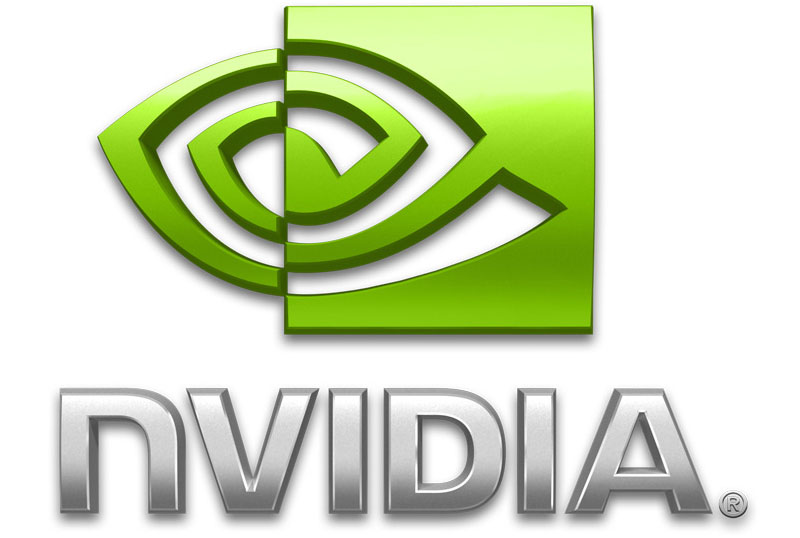 Since AMD has had a few leaks about their Tahiti GPU it only serves to reason that nVidia would manage a few of their own. After all, what is good for one side is good for the other. We found these while clicking around (as usual) looking for something interesting out there to write about. We happened upon a German 3D site called 3DCenter and found a very interesting news post to write about indeed.
Since AMD has had a few leaks about their Tahiti GPU it only serves to reason that nVidia would manage a few of their own. After all, what is good for one side is good for the other. We found these while clicking around (as usual) looking for something interesting out there to write about. We happened upon a German 3D site called 3DCenter and found a very interesting news post to write about indeed.
The Race to 28nm Should be Interesting
![]() The race to 28nm is going to be an interesting one. Both AMD and nVidia already have working silicon models but neither are ready to start shipping parts to the market. The biggest reason for this is the fact that TSMC (Taiwanese Silicon Manufacturing Company) is having problems with the transition to full scale 28nm production. This is despite the fact that they began the move more than three years ago. Back in 2008 TSMC announced they would begin the move to 28nm and start full scale production on 28nm High-K Metal Gate (HKMG) and Silicon Oxynitride (SiON) materials by 2010. We are now moving into the end of 2011 and we are still hearing about issues with yields on these parts.
The race to 28nm is going to be an interesting one. Both AMD and nVidia already have working silicon models but neither are ready to start shipping parts to the market. The biggest reason for this is the fact that TSMC (Taiwanese Silicon Manufacturing Company) is having problems with the transition to full scale 28nm production. This is despite the fact that they began the move more than three years ago. Back in 2008 TSMC announced they would begin the move to 28nm and start full scale production on 28nm High-K Metal Gate (HKMG) and Silicon Oxynitride (SiON) materials by 2010. We are now moving into the end of 2011 and we are still hearing about issues with yields on these parts.
Tegra 3 prospects looking up
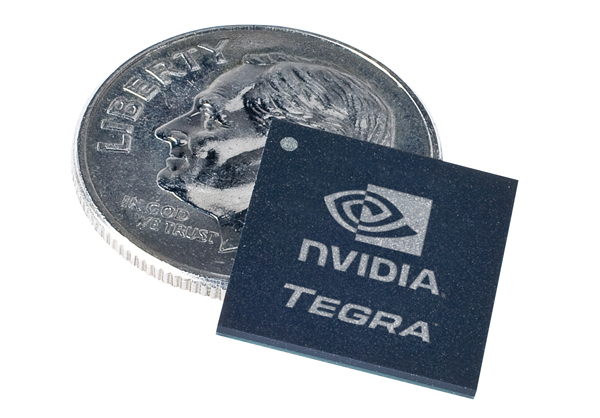 Today is a good day for nVidia and their Tegra 3 SoC. Although we previously told you about the Asus Transformer Prime earlier it still bears repeating that today is the official launch. We can expect the new quad core Android Tablet to hit the stores in the US in December (let’s hope they make it before Black Friday). Unfortunately the rest of the world will have to wait a little bit.
Today is a good day for nVidia and their Tegra 3 SoC. Although we previously told you about the Asus Transformer Prime earlier it still bears repeating that today is the official launch. We can expect the new quad core Android Tablet to hit the stores in the US in December (let’s hope they make it before Black Friday). Unfortunately the rest of the world will have to wait a little bit.
For those of you checking your bank accounts we will update you with some more information on the new device. The Transformer Prime will be shipping with a Tegra 3 “Kal-el” SoC which packs four processing cores that runs between 500MHz and 1.4GHz. This dynamic allocation of performance is responsible for the great battery life that has been talked about on the web (by nVidia and Asus). If you are running HD video you will get a very nice 12 hours out of your battery.
Other specs include 1GB of RAM, a 1280x800 Super IPS Display protected by Gorilla glass, mini HDMI, an 8MP f/2 camera, and a MicoSD slot. It will ship with Honeycomb (3.2) but Asus has already promised an upgrade to Ice Cream Sandwich as soon as it is ready.
The Prime will come in two main flavors a 32GB model at $499 and a 64GB model at $599. Both will still bring you in under the cost for the same sized iPad 2.
The other exciting news from the Tegra 3 world is the confirmation that HTC is indeed making a smart phone with this quad core monster in it. So far the details are light but it looks like this new phone will have a 4.7-inch screen that will be capable of 720p HD resolutions. This will be the first phone from HTC that has not had a Qualcomm SoC under the hood so it will be interesting to see how it all turns out.
It looks like the Tegra 3 will enjoy a very good end of 2011 and a great 2012. We will try to get you more information on both of these products in the next few days.
Discuss in our Forum
Asus taking the lead in the "Non-Apple" Tablet Market
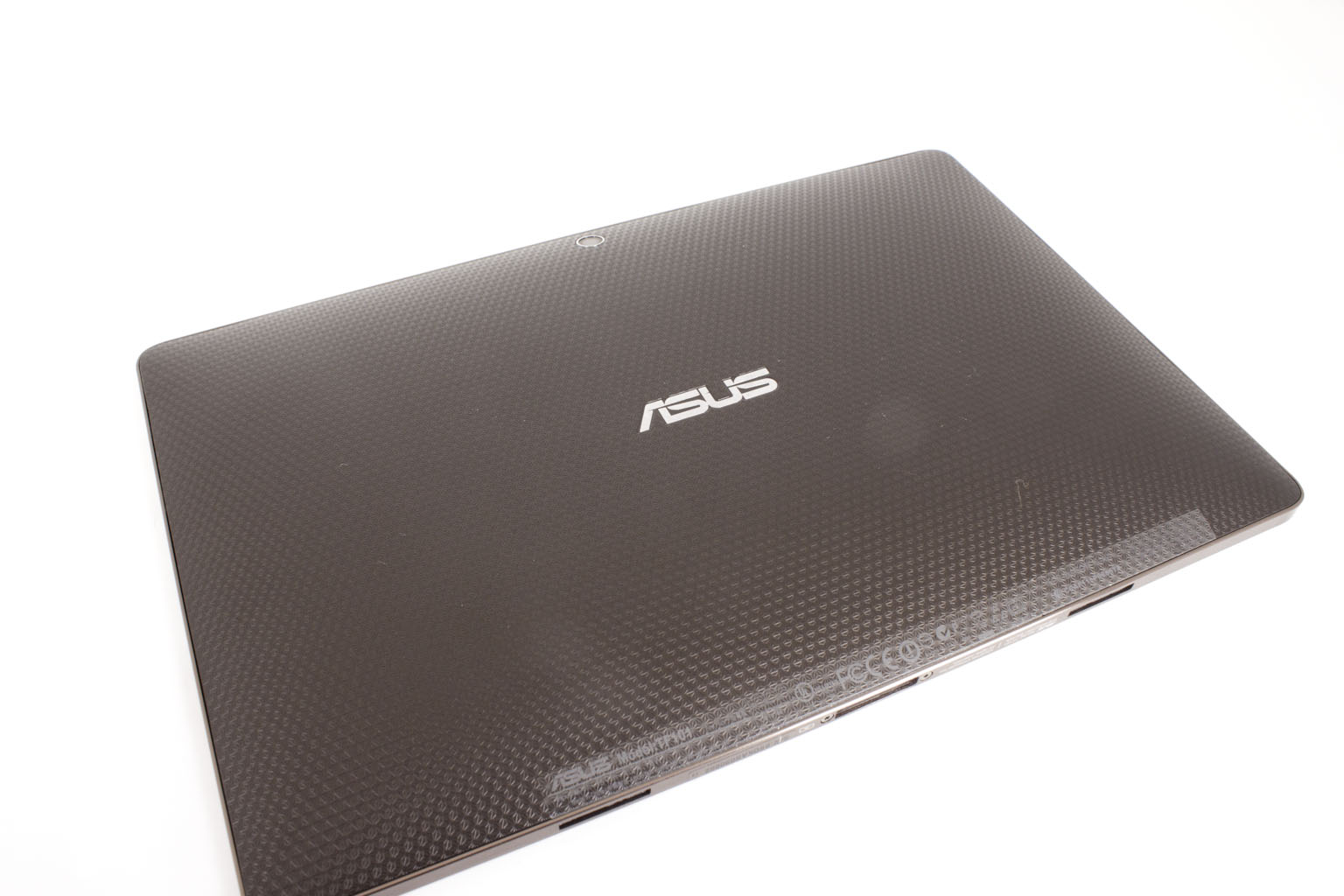 Asus is known for taking a concept and running with it. At least in the last few years they have been that way. When the idea of the “netbook” entered the market the thought was a cheap, light device for content consumption that could compete with some of the smaller products from Apple like the iBook. Many companies jumped in on this market bandwagon, but only one really went the whole distance (meaning that most companies stayed in APAC or the EU). Asus decided to develop the EEE line up and then pushed it to the global market.
Asus is known for taking a concept and running with it. At least in the last few years they have been that way. When the idea of the “netbook” entered the market the thought was a cheap, light device for content consumption that could compete with some of the smaller products from Apple like the iBook. Many companies jumped in on this market bandwagon, but only one really went the whole distance (meaning that most companies stayed in APAC or the EU). Asus decided to develop the EEE line up and then pushed it to the global market.
After this daring move (and in less than three years) Asus went from an unknown on the mobile market to one of the highest rated companies for customer satisfaction (based on return rates and consumer complaints). Now we are seeing something very similar in the tablet market. There is no doubt that Apple owns the lion’s share right now but Asus has put out not just one, but three compelling competitors for the market to feast on. At the very top and for the Windows fan is the EEE Slate EP121 with a dual Core i5 ultra mobile CPU, 4GB of RAM and up to a 64GB SSD for storage. Beneath this we find the Transformer which is a 10.1 tablet with a keyboard/dock and battery. The last in the group is the slider, another tablet and keyboard combination but this one has the keyboard under the display and it… you guessed it slides out for use.
Now you might be wondering why I am giving you a rundown of Asus’ tablet offerings. Well the reason is simple; you cannot understand where a company is going until you know where they have been. Let’s take a look at what we have and what Asus has said publicly to gauge where they are headed in the tablet market for 2012.
For the Windows fans we have the current EEE Slate EP121. This is a great product, but there are many that look at its size and weight as an obstacle. In my experience with it there are times when it is just too big. Added to this is the complete lack of any usable accessories for the product. There are no cases for it, no stands, nothing. It makes using it troublesome for the average user.
Fortunately Asus is working on this issue. We have heard that they are planning at least two Windows 8 tablets and if the information we have is correct one of them will be x86-64 while the other is some form of ARM CPU (most likely Tegra). This will put the Windows user’s minds at ease.
For the Android market we know that the Transformer Prime will already hit the market in just 8 days. This device will be thinner, lighter and much more powerful with a quad-core Tegra under the hood. For the rest of the lineup we find that Asus has plans for two “Hero” products in Q1 2012 that will run Google’s Ice Cream Sandwich. One of these (so the rumor goes) could be a 3D display model (or maybe both will be). nVidia is big on 3D and there have been some outstanding work done to bring the glassless 3D Panels up in quality and down in price. I would not be surprised to see a 3D enabled Quad Core Tegra under the hood of one of these two “Hero” products next year.
What we are seeing is the same thought process that Asus has used again and again with their products. They actually do some good market research and then they use the tried and tested shotgun approach. They launch multiple products and see which ones take off. In the case of the tablet; all three have but for different reasons (because different markets want different things). This is actually a great win for Asus as they can now work to perfect these products like they have done with the EEE PC line up which is now moving into another generation.
This is what Asus does though, we have heard about it since we started our relationship with Asus back in the late 90’s. They were not quite where they are now, but the one thing they talked about consistently and asked about all the time was “what can we do to improve this”. Now they have a much larger market to ask that question of and they also can watch what their competitors do to gain an insight into how to build on their product portfolio. It has been interesting to watch them at work and to also see how their products impact the market (we will talk more about that later).
We will be keeping an eye on the tablet market as well as watching the development of Windows 8 to see how the chips fall and if Asus will become the leader in the “non-Apple” world of the tablet both x86 and ARM.
Discuss in our Forum
Qualcomm Claims their Next Gen Processor will be 50% Faster than the Other Guys
 With all the news about the major ARM players like Samsung, nVidia, Texas Instruments etc. It is nice to finally hear the news about one of the largest, yet least talked about. At one time if you bought a cell phone (this was before the Smart Phone age) you had Qualcomm under the hood (and in many cases AMD as well). However, lately all we hear about is Hummingbird and Tegra (with an occasional mention of Snapdragon). That is until yesterday.
With all the news about the major ARM players like Samsung, nVidia, Texas Instruments etc. It is nice to finally hear the news about one of the largest, yet least talked about. At one time if you bought a cell phone (this was before the Smart Phone age) you had Qualcomm under the hood (and in many cases AMD as well). However, lately all we hear about is Hummingbird and Tegra (with an occasional mention of Snapdragon). That is until yesterday.
Qualcomm has announced that they are prepping to launch a new series of 28nm processors which they claim are 50% faster than “other ARM based offerings in the mobile CPU market”. This is very healthy boast to say the least. Right now all of this is in the pre-production stages so we do not have any phones or designs to tell you about, but we do have a little bit of information about the processor itself.
The new proc will be dubbed the S4 MSM 8960 and will hit the market as a dual core offering with a quad core to follow. Instead of an on/off switch for power the CPU is going to be built with something like a dial. This will allow for dynamic power steps to be sent to the processor. I have not heard of this being done quite this way so it should be interesting to see how it works out.
Inside the 8960 you will have a new GPU, this is the Adreno 225 which is a unified shader design (think AMD/ATi) and will support DX9.x and possibly shader model 3. Now we wonder what kind of radio they are going to build into this as that has been one of Qualcomm’s strengths (the Cellular and Wireless Radio built into the SoC) and something that Samsung and nVidia have been trying to get done as well. We know that nVidia has been buying up wireless technology patents with the hopes integrating their own radios into their Tegra SoC, but have not announced anything on that just yet.
For now it would seem that Qualcomm has taken a step out front in the performance arena. We do think that their GPU offering is probably not up to the same standard as nVidia’s Tegra, but then again many people looking to buy a phone do not need it to play graphics heavy games… I mean really, how much GPU does Angry Birds or words with friends use?
Discuss in our Forums
ARM Announces 64-Bit Specifications for ARM Processors
 We have been following the path of Windows 8 pretty closely including trying out the Developer’s preview on some existing tablet hardware (which lasted all of 4 days). So far we have a good feel for the OS and what is nice and what is not. We have talked at length about the mistake that we feel the MetroUI is both for the tablet market and the desktop. But it is the tablet market that we are most interested in. We know that there will be more x86 (64) based tablets in the future especially with the popularity (relatively) of the ones that are currently out (and that use a full Intel Core CPU and not an Atom). But how will ARM fare even a quad core ARM SoC when Windows 8 and all of its anticipated bloat hits it?
We have been following the path of Windows 8 pretty closely including trying out the Developer’s preview on some existing tablet hardware (which lasted all of 4 days). So far we have a good feel for the OS and what is nice and what is not. We have talked at length about the mistake that we feel the MetroUI is both for the tablet market and the desktop. But it is the tablet market that we are most interested in. We know that there will be more x86 (64) based tablets in the future especially with the popularity (relatively) of the ones that are currently out (and that use a full Intel Core CPU and not an Atom). But how will ARM fare even a quad core ARM SoC when Windows 8 and all of its anticipated bloat hits it?
This is that thing that has us wondering. Well we think we have an answer as ARM has just announced 64-bit capable processors. The ARMv8 is a going to be a new specification for ARM processors that is capable of executing both 32 and 64-bit instructions. This means an extended memory profile (not to mention performance) for applications that can handle the 64-bit memory block addressing. But more than that these smaller and lighter CPUs will be heading to the enterprise for some specific tasks (which means the rumors about a future ARM based version of Windows Server are true). Imagine being able to utilize these low power lost cost CPUs to run Domain Controllers, Web Server and other system that do not require the heavy lifting of a full x86-64 CPU. It will save companies quite a bit of money, and what is more… what starts in the enterprise ends up on the consumer’s plate. We have a sneaking suspicion that these new CPUs will end up in the consumer market faster than usual though as the press release about this mentioned Microsoft and nVidia directly. nVidia has made no secret that they want their Tegra SoCs to represent 50% of their revenue which means the consumer market for sure (with some enterprise products just for fun).
As of right now, the first devices will not be announced until 2012 with the first prototypes hitting in 2014. This means that while we have a good wait ahead of us it will give Microsoft time to fix what is buggy in Windows 8 just in time for the new 64-bit ARM CPUs to launch.
Discuss in our Forum
Asus shows off Next Gen Transformer, Padfone and More
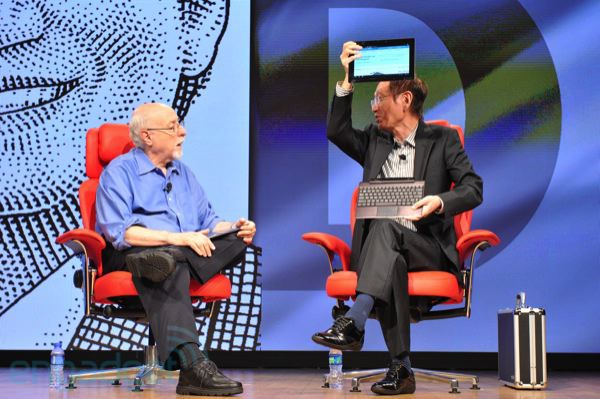 Asus had some great news during the AsiaD conference today. Not only did they finally show off the next generation Transformer (now called the Transformer Prime) but they also announced Ultrabooks, the Padfone and gave us a rough idea of when we can expect to see Ice Cream Sandwich for their line of Android Tablets. Now that we have set the table let’s dive in and see how each one of these tastes.
Asus had some great news during the AsiaD conference today. Not only did they finally show off the next generation Transformer (now called the Transformer Prime) but they also announced Ultrabooks, the Padfone and gave us a rough idea of when we can expect to see Ice Cream Sandwich for their line of Android Tablets. Now that we have set the table let’s dive in and see how each one of these tastes.
To kick things off Jonney Shih brought out the new Transformer Prime. This is the one that everyone has been talking about since rumors first popped up about a new Quad Core tablet in early September. Then just yesterday Asus dropped a nice teaser video on the internet that again ran around like mad. Now we are finally getting to see this new device. Although not a complete launch (that is on the 9th of November) Jonney showed use a 10 inch tablet with an 8.3mm thick slate. Under the hood is a Quad Core Tegra 3 SoC which should be more than capable of handling just about anything you throw at it. Although the amount of memory has not been fully disclosed we are betting on 2GB as that is in keeping with the typical 512MB per core that nVidia likes to have. Other items of interest on the Prime are a mini-HDMI, an SD Card Slot… pretty much the same thing you find on the current Transformer.
Next up is something that we have been wondering about since we saw a video explaining Asus’ direction for the coming years. This is the Padfone, at the time it show it was all concept art and not much else. However now we find out that it is going to launch in Q1 2012 and should ship with Android 4.0. For those of you that are no familiar with this it is basically a “super phone” with a 10.1-inch tablet that it can dock into. Think of the Atrix with quite a bit more style and class.
Last on the list of cool things coming from Asus was an announcement of Ultrathin Netbooks that will look something like the Zenbook, only smaller. According to Shih the netbook is not dead but does need to evolve to survive. We will try to get some more information about these items (especially the Transformer Prime and Padfone) in the next few weeks and get this out to you as soon as we get it.
Source and Image Credit Engadget
Discuss in our Forum
nVidia looking for the mobile market to grow
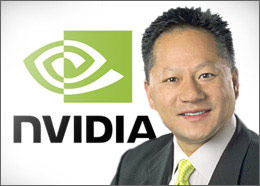 About two years ago, roughly the same time as the ZuneHD hit the market with the first Tegra inside, nVidia CEO Jen-Hsun Huang made a prediction of sorts. He stated that he envisioned a time when the GPU was not the bread and butter of nVidia. Instead he saw the mobile CPU and the SoC (system on chip) as the wave of the future. Of course he could not get away from his graphical legacy, so his vision also included an nVidia GPU (or two) along with the mobile CPU. At the time the press sort of overlooked the story. It was not that news worthy. After all the Tegra only had one well known design win (there were others but many never reached the market) the ZuneHD. Arguably it was (and still is) a great product, it just was marketed VERY poorly and was going head to head with the greatest show on Earth; the Apple marketing team.
About two years ago, roughly the same time as the ZuneHD hit the market with the first Tegra inside, nVidia CEO Jen-Hsun Huang made a prediction of sorts. He stated that he envisioned a time when the GPU was not the bread and butter of nVidia. Instead he saw the mobile CPU and the SoC (system on chip) as the wave of the future. Of course he could not get away from his graphical legacy, so his vision also included an nVidia GPU (or two) along with the mobile CPU. At the time the press sort of overlooked the story. It was not that news worthy. After all the Tegra only had one well known design win (there were others but many never reached the market) the ZuneHD. Arguably it was (and still is) a great product, it just was marketed VERY poorly and was going head to head with the greatest show on Earth; the Apple marketing team.
Jump forward to today and we find the Tegra and the Tegra 2 in many devices. In fact one of the best-selling Android tablets on the market today has a Tegra 2 dual core SoC inside (for those of you that do not know it is the Galaxy Tab 10.1) this is followed by devices like the Asus EEE Pad Tansformer and others. They really have come a very long way in terms of the smartphone and tablet market. Of course they still have Apple to contend with (and their legal and marketing teams) so the battle is not won just yet. However, what we are seeing is that Huang’s vision is coming to pass. nVidia just might find itself earning more than 50% of their income from the tiny SoC and not their high-end GPUs.
Still the road ahead is not completely clear, nVidia will face competition in the form of Qualcom (which just bought BigFoot Networks), as well as Samsung and Even Apple (to a lesser degree) in this new market. As for Intel, Huang says they are not worried about them because the Atom is not an ARM CPU and is not even “speaking the same language”. He feels that the lower cost ARM based tablets will be more attractive to the consumer looking for a small and light system. With the advent of Windows 8 for ARM people will also gain the ability to move back and forth between ARM and x86 keeping things on almost the same platform. This will help to bring the more “desktop centric” consumers into the fold especially with the prospect of a quad core ARM CPU running Windows 8 on the horizon.
It is when companies have to innovate to survive that some of the coolest things arise. I wonder what we will see from Tegra in near future and what lessons from Tegra will nVidia take to other departments to help improve them?
Source CNET
Discuss in our Forum
nVidia to go down the External Graphics Road
 It seems like companies are determined to re-vsit old ideas these days. We see VMWare trying to recreate a wheel that was pioneered by Citrix. Apple is always redoing an old idea and presenting it like it is a new concept and now we see nVidia going down a road that has been traveled more than once before. The road in question is external video devices; not monitors or splitters or anything like that, but we are talking about external video cards. This is something that has been done before and did not go over all that well. I ccan remember when people were buying PCMCIA cards for use with video editing software. These would work for a while, but the cards would often die (and be replaced) or the inconvinience of using this would become so great we would end up building them a desktop system to replace the laptop they had just bought.
It seems like companies are determined to re-vsit old ideas these days. We see VMWare trying to recreate a wheel that was pioneered by Citrix. Apple is always redoing an old idea and presenting it like it is a new concept and now we see nVidia going down a road that has been traveled more than once before. The road in question is external video devices; not monitors or splitters or anything like that, but we are talking about external video cards. This is something that has been done before and did not go over all that well. I ccan remember when people were buying PCMCIA cards for use with video editing software. These would work for a while, but the cards would often die (and be replaced) or the inconvinience of using this would become so great we would end up building them a desktop system to replace the laptop they had just bought.
Still if the word from Fudzilla is to be believed this is something that nVidia will be producing and they are even excited about the prospect. We think that this will go the same way that AMD's external grpahics has gone. It is a VERY niche product and one that not only has a limited number of partners (Sony) but also has a very limited market vertical. The problem is that most of the markets where this would be desired already have mobile systems with impressive discrete graphics all on there own. If this is reall a direction that nVidia is going down, they will have a rought road ahead.
Source Fudzilla
Discuss in our Forum
nVidia's Kepler running a little late
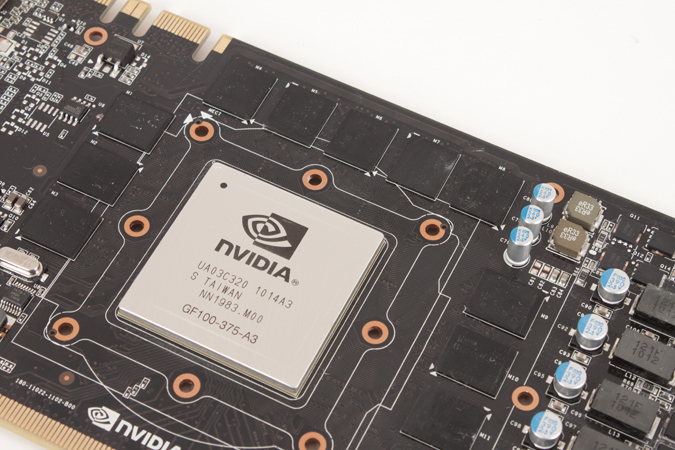 When I hear the name of nVidia’s next-gen GPU code named Kepler all I can hear is Cave Johnson from Portal 2 saying, “Now if you're part of control group Kepler-7, we planted a tiny microchip, about the size of a postcard, into your skull.” It is interesting in that Kepler is supposed to be nVidia’s 28nm GPU offering. True a 28nm GPU is a lot smaller than a post card but the other half of Cave Johnson’s statement does seem to have some very nVidia parallels… “Most likely you've forgotten it's even there, but if it starts vibrating and beeping during this next test let us know, because that means it's about to hit about 500 degrees so we're gonna need to go ahead and get that out of you pretty fast.”
When I hear the name of nVidia’s next-gen GPU code named Kepler all I can hear is Cave Johnson from Portal 2 saying, “Now if you're part of control group Kepler-7, we planted a tiny microchip, about the size of a postcard, into your skull.” It is interesting in that Kepler is supposed to be nVidia’s 28nm GPU offering. True a 28nm GPU is a lot smaller than a post card but the other half of Cave Johnson’s statement does seem to have some very nVidia parallels… “Most likely you've forgotten it's even there, but if it starts vibrating and beeping during this next test let us know, because that means it's about to hit about 500 degrees so we're gonna need to go ahead and get that out of you pretty fast.”
Now, I am saying this with humor, but we have seen some rather hot GPUs from nVidia over the years. If Kepler has the same issues that Fermi had then the first run could be quite the space heater. Of course, if you ask the typical gamer they will more than likely tell you that they do not care as much about the heat as long as the FPS is through the roof.
Which brings us to the real crux of the issue, nVidia has already admitted that they will be at least a month or more behind their original timeline for this release (like Fermi) and they will be far behind AMD’s Southern Islands. In the gaming and GPU market it is often the person that gets to market first that wins the acceptance. This is not like the DX11 shift when it was Fermi Vs the Other Islands from AMD where there were almost no compelling games using that technology. Now we are looking at a few good DX11 games so we are going to see people looking to pounce on the next generation products as long as they are faster than what is currently on the market from both companies and the prices are right.
nVidia really needs to get on the ball to get their timelines back in order or they do stand to lose quite a few Holiday sales to AMD which will hurt their own sales numbers when they finally do get Kepler out the door.
Discuss this in our Forum
